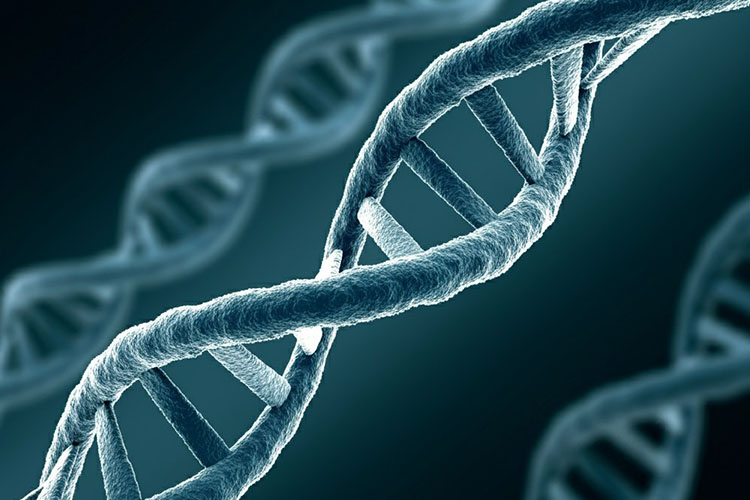Summary
Leukemia is a type of cancer that affects the blood and blood-forming cells. Often referred to as “blood cancer,” the term originates from the Greek words leukos (meaning “white” or “clear”) and haima (meaning “blood”). This condition arises when the bone marrow produces abnormal white blood cells. Healthy white blood cells are essential for fighting infections, but in leukemia, the bone marrow produces excessive abnormal white cells that overcrowd healthy blood cells. This overproduction weakens the blood’s ability to fight infections and other health conditions.
While the exact cause of leukemia remains unknown, both genetic and environmental factors are considered potential contributors. Genetic mutations, family history, and exposure to certain chemicals or radiation are some factors linked to an increased risk of developing leukemia. However, the relationship between these factors and leukemia is complex, and researchers continue to study how these variables interact to cause the disease.
Common symptoms of leukemia include fever, fatigue, frequent infections, easy bruising or bleeding, and significant weight loss. Treatment options for leukemia today include chemotherapy, radiation therapy, stem cell transplants, and in some cases, surgery. The choice of treatment depends on the type and stage of leukemia, with targeted therapies often used to improve patient outcomes.
Table of Contents
Symptoms of Leukemia

Since there are different types of leukemia, the symptoms can vary. However, the following symptoms are commonly seen across all types of leukemia:
- Fever with chills. Frequent fevers and chills may occur as the body struggles with an impaired immune system.
- Frequent infections. With weakened immune function, infections become more frequent and harder to fight.
- Persistent fatigue. Anemia or low red blood cell count often leads to constant tiredness and lack of energy.
- Swelling of lymph nodes, liver, and spleen. Leukemia can cause these organs to enlarge as they become overloaded with abnormal cells.
- Easy bruising and unexplained bleeding. The disease affects platelet production, making bruising and bleeding common, even without obvious injury.
- Recurrent nosebleeds. Spontaneous nosebleeds may happen due to a low platelet count.
- Unexplained weight loss. Rapid weight loss can be a sign of the body fighting an underlying illness like leukemia.
- Red skin spots. Known as petechiae, these small red or purple spots indicate low platelet levels and impaired blood clotting.
- Excessive sweating, especially at night. Night sweats are a common sign of leukemia, often occurring without clear reason.
- Bone pain. Leukemia can cause bone marrow to swell, leading to discomfort or pain in the bones.
As with other illnesses, leukemia does not affect everyone in the same way. Certain people have a higher risk of developing this condition, including those with certain genetic conditions or a family history of leukemia, as well as those exposed to environmental risk factors like radiation or toxic chemicals.
Types of Leukemia
Leukemia, or blood cancer, comes in various types, each with its unique characteristics and rate of progression. The main types include:
- Acute myeloid leukemia (AML). Also known as acute myeloblastic leukemia, acute granulocytic leukemia, acute myelogenous leukemia, or acute non-lymphocytic leukemia, AML is an aggressive form of leukemia that rapidly affects the blood and bone marrow. It leads to the quick accumulation of immature white blood cells, known as myeloblasts, which interfere with the production of healthy blood cells.
- Acute lymphocytic leukemia (ALL). This rapidly progressing type of leukemia replaces healthy blood cells with immature lymphocytes. ALL spreads quickly through the bloodstream to various parts of the body, including the liver, brain, testes, and lymph nodes. Due to its widespread effect, ALL can cause a range of symptoms as multiple organs become impacted by the disease.
- Chronic myeloid leukemia (CML). CML originates in blood-forming cells in the bone marrow and gradually spreads to the bloodstream and other body parts. Although it progresses more slowly than acute leukemia, CML can eventually affect multiple organs, and it often requires long-term management.
- Chronic lymphocytic leukemia (CLL). This slower-growing leukemia starts in the lymphocytes in the bone marrow and spreads to the bloodstream. Over time, it may spread to other areas such as the spleen, liver, and lymph nodes. In CLL, abnormal blood cells eventually outnumber healthy ones, compromising the blood’s ability to fight infections effectively.
- Hairy cell leukemia. A rare type of chronic lymphocytic leukemia, hairy cell leukemia progresses slowly. It occurs when the bone marrow produces an excess of abnormal B cells, which appear “hairy” under a microscope. This condition results in reduced production of healthy white blood cells, red blood cells, and platelets, weakening the immune system.
These types of leukemia differ significantly in terms of progression, symptoms, and treatment approaches. Understanding the specific type of leukemia is essential for effective management and treatment planning.
Diagnostic Procedures for Leukemia

Diagnosing leukemia involves a series of tests to detect abnormal blood and bone marrow cells, identify the leukemia type, and assess the extent of the disease. Here are the most common diagnostic procedures used to diagnose leukemia:
- Blood tests. A complete blood count (CBC) is often the first test used to detect leukemia. This test measures the levels of different blood cells, including white blood cells, red blood cells, and platelets. In leukemia, abnormal white blood cell counts or low red blood cell and platelet counts can indicate the presence of the disease.
- Bone marrow biopsy and aspiration. To confirm a leukemia diagnosis, a sample of bone marrow is taken from the hipbone using a thin needle and then examined under a microscope. This test helps determine if leukemia cells are present in the bone marrow and identifies the type of leukemia.
- Flow cytometry and immunophenotyping. These tests analyze cell surface markers on blood or bone marrow cells to identify specific types of leukemia. Flow cytometry can detect unique proteins on leukemia cells, helping to distinguish between different leukemia subtypes.
- Cytogenetic testing (karyotyping). This test examines the chromosomes in cells from a bone marrow sample. Certain chromosome changes, such as translocations or deletions, are associated with specific types of leukemia. Cytogenetic testing helps identify these abnormalities and guides treatment planning.
- Fluorescence in situ hybridization (FISH). FISH is a type of genetic testing that uses fluorescent probes to detect specific genetic mutations or chromosomal abnormalities in leukemia cells. It is a faster method than traditional karyotyping and helps identify specific mutations that affect prognosis and treatment.
- Polymerase chain reaction (PCR) testing. PCR testing detects specific genetic changes at a molecular level, even if there are only a few leukemia cells present. This test can help track treatment progress and detect minimal residual disease (MRD), which refers to small amounts of leukemia cells that remain after treatment.
- Lumbar puncture (spinal tap). If there is a risk of leukemia spreading to the brain or spinal cord, a lumbar puncture may be performed to examine cerebrospinal fluid for leukemia cells. This is especially relevant for certain types of leukemia, such as acute lymphocytic leukemia (ALL).
- Imaging tests. X-rays, CT scans, MRIs, and ultrasounds may be used to check if leukemia has spread to other parts of the body, such as the lymph nodes, liver, spleen, or central nervous system. These tests can help assess the extent of the disease and any associated complications.
Each of these diagnostic procedures helps healthcare providers understand the type and stage of leukemia, enabling them to develop an effective and personalized treatment plan. Early and accurate diagnosis is critical for managing leukemia and improving patient outcomes.
Complications of Untreated Leukemia
If left untreated, leukemia can lead to several serious health complications due to its impact on the blood, immune system, and organs. As leukemia progresses, it disrupts the normal functions of blood cells, weakening the body’s ability to fight infections, carry oxygen, and control bleeding. Here are some potential complications of untreated leukemia:
- Severe infections. Leukemia disrupts the production of healthy white blood cells, which are essential for immune defense. This leaves the body vulnerable to frequent and potentially life-threatening infections that it cannot fight effectively.
- Anemia. Untreated leukemia often reduces red blood cell production, leading to anemia. Anemia causes symptoms like fatigue, weakness, shortness of breath, and pale skin due to insufficient oxygen being carried to tissues throughout the body.
- Excessive bleeding and bruising. Leukemia reduces the number of platelets, which are critical for blood clotting. Low platelet counts can result in easy bruising, spontaneous bleeding, frequent nosebleeds, bleeding gums, and even internal bleeding in severe cases.
- Organ damage. As leukemia cells multiply, they can infiltrate and enlarge organs such as the liver, spleen, and lymph nodes. This causes organ dysfunction and symptoms such as abdominal pain, fullness, and swelling. In advanced cases, leukemia may also spread to other organs, including the central nervous system.
- Bone and joint pain. Leukemia cells can build up within bone marrow, leading to pain and stiffness in the bones and joints. This pain can become severe and interfere with daily activities if leukemia remains untreated.
- Weakened immune system. A reduced immune response not only increases the risk of infection but also makes the body more susceptible to other diseases. Leukemia patients may develop secondary infections or additional cancers due to an impaired immune system.
- Hyperleukocytosis. When leukemia cells build up in large numbers, they can clog the bloodstream, leading to a condition known as hyperleukocytosis. This can cause breathing difficulties, neurological symptoms (such as headaches or confusion), and organ failure.
- Leukostasis. In extreme cases, high numbers of abnormal white blood cells cause a thickening of the blood, resulting in leukostasis. This is a medical emergency and can lead to strokes, respiratory failure, or coma due to reduced blood flow to the brain and lungs.
- Death. Without treatment, leukemia can progress rapidly, especially in acute forms, and ultimately lead to death. Chronic forms of leukemia may progress more slowly but will also become life-threatening if left unmanaged.
Leukemia requires timely diagnosis and treatment to manage symptoms and prevent these serious complications. Early intervention and regular monitoring can improve outcomes and quality of life for those affected by leukemia.
Causes of Leukemia
The direct cause of leukemia is the uncontrolled overproduction of abnormal blood cells in the bone marrow. This happens when certain genetic mutations disrupt normal blood cell development, causing immature blood cells to grow and divide at an accelerated rate. These abnormal cells fail to mature properly and lack the ability to fight infections, eventually crowding out healthy blood cells in the bloodstream and bone marrow.
The underlying mechanism involves specific mutations in the DNA of bone marrow cells. These mutations can affect genes that regulate cell growth, division, and death. For example, some genetic changes can activate oncogenes (cancer-causing genes) or deactivate tumor suppressor genes, directly leading to leukemia by allowing cells to multiply uncontrollably.
This unchecked growth of abnormal cells prevents the bone marrow from producing adequate numbers of healthy blood cells, which are necessary for immune defense, oxygen transport, and blood clotting. Over time, this leads to symptoms such as frequent infections, anemia, and easy bruising or bleeding as the body’s normal functions are compromised by the overwhelming presence of cancerous cells.
Prevention of Leukemia

Certain types of leukemia may be preventable, with lifestyle changes playing a key role in reducing risk. Here are some ways to help minimize the risk of leukemia:
- Avoiding certain foods. Some studies suggest that a Western diet, high in processed meats, high-fat dairy products, refined grains, sugary foods, high-calorie drinks, and instant meals, may increase leukemia risk. Reducing or eliminating these foods from one’s diet can be a proactive step toward lowering potential risk factors associated with leukemia.
- Limiting artificial sweeteners. Research on animals has linked some artificial sweeteners, such as sucralose, to an increased risk of leukemia. While human studies are limited, sucralose has been shown to disrupt gut health by reducing beneficial gut bacteria. A significant reduction in these bacteria can weaken the immune system, making the body more susceptible to lymphoma and potentially other cancers. Limiting artificial sweeteners may support a healthier immune response.
- Engaging in regular exercise. Numerous studies have shown that regular physical activity can significantly reduce the risk of tumors and certain cancers. Recent research indicates that consistent exercise can also help lower leukemia risk by supporting immune health, improving blood flow, and maintaining a balanced body weight, all of which contribute to cancer prevention.
Incorporating these lifestyle changes can be beneficial for general health and may reduce the risk of leukemia and other cancers. While lifestyle adjustments cannot guarantee prevention, they help promote a strong immune system and a lower-risk profile.
Risk Factors for Leukemia

The following are risk factors associated with an increased likelihood of developing leukemia:
- Gender. Research shows that men are at a higher risk of developing leukemia than women.
- Age. People aged 65 and older are more commonly affected by certain types of leukemia, such as acute myeloid leukemia (AML), chronic lymphocytic leukemia (CLL), and chronic myeloid leukemia (CML). In contrast, acute lymphocytic leukemia (ALL) more frequently affects individuals 20 years old and younger.
- Family history. While not all types of leukemia are hereditary, some forms, such as chronic lymphocytic leukemia, acute myeloid leukemia, and acute lymphocytic leukemia, may have genetic links, increasing the likelihood of the disease in family members.
- Existing blood conditions. Certain blood disorders, such as polycythemia vera, idiopathic myelofibrosis, and essential thrombocythemia, elevate the risk of developing AML.
- Previous cancer treatment. Individuals who have undergone cancer treatments, such as chemotherapy or radiation, have an increased risk of developing secondary cancers, including leukemia.
- Exposure to radiation and electromagnetic fields. High exposure to radiation, as well as living close to sources of electromagnetic fields, such as communication towers and power lines, may increase the risk of leukemia.
- Chemical exposure. Individuals with prolonged exposure to industrial chemicals and pesticides have been shown to have a higher risk of leukemia.
- Smoking. While smoking is not a direct cause of leukemia, it does increase the risk of acute myeloid leukemia (AML), as tobacco contains chemicals that may contribute to mutations in blood cells.
Understanding these risk factors can guide individuals in making informed lifestyle choices, especially when managing or mitigating potential environmental and lifestyle risks associated with leukemia.
Leukemia FAQs
Leukemia is a type of cancer affecting blood and bone marrow. Understanding its symptoms, causes, and treatment options can help in early detection and effective management. Here are some frequently asked questions about leukemia to provide more clarity on this complex condition.
- What is leukemia?
Leukemia is a type of cancer that originates in the bone marrow, where blood cells are produced. In leukemia, the bone marrow produces abnormal white blood cells that crowd out healthy cells, impairing the body’s ability to fight infections, carry oxygen, and clot blood. - What are the main types of leukemia?
The four main types of leukemia are acute myeloid leukemia (AML), acute lymphocytic leukemia (ALL), chronic myeloid leukemia (CML), and chronic lymphocytic leukemia (CLL). Each type differs in its progression rate and the specific blood cells it affects. - What causes leukemia?
While the exact cause of leukemia is unknown, it is believed to be linked to genetic mutations in bone marrow cells, which disrupt normal blood cell production. Environmental factors like radiation, chemical exposure, and previous cancer treatments are also associated with an increased risk. - What are common symptoms of leukemia?
Leukemia symptoms include fatigue, frequent infections, easy bruising or bleeding, weight loss, swollen lymph nodes, fever, night sweats, and bone pain. However, symptoms vary depending on the leukemia type and stage. - How is leukemia diagnosed?
Leukemia is diagnosed through blood tests, which may show abnormal cell counts, and bone marrow biopsies, which examine the bone marrow cells. Additional tests, such as imaging scans, help assess the spread and impact on organs. - Can leukemia be inherited?
Some forms of leukemia may have genetic links, meaning a family history could increase risk. However, most cases are not directly inherited and are instead influenced by a combination of genetic and environmental factors. - What are the treatment options for leukemia?
Treatment depends on the leukemia type and stage. Common options include chemotherapy, radiation therapy, targeted therapy, and stem cell transplantation. The goal is to eliminate cancer cells and support healthy blood cell production. - Is leukemia curable?
While some types of leukemia can go into long-term remission, a complete cure may not be possible for all types. With treatment, many people manage leukemia effectively, achieving remission or long-term control of the disease. - Are there lifestyle changes that can help manage leukemia?
Lifestyle changes such as a balanced diet, regular exercise, and avoiding exposure to environmental toxins like tobacco smoke may help boost overall health, but they cannot cure leukemia. These changes can support general wellness and may help during recovery. - Can leukemia be prevented?
There is no guaranteed way to prevent leukemia, but reducing exposure to known risk factors, like radiation, toxic chemicals, and smoking, may lower the risk.


